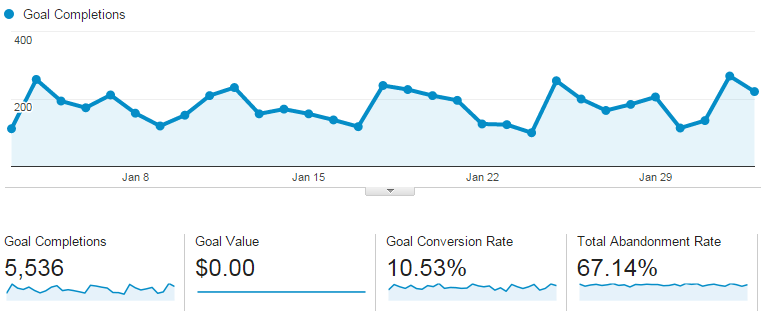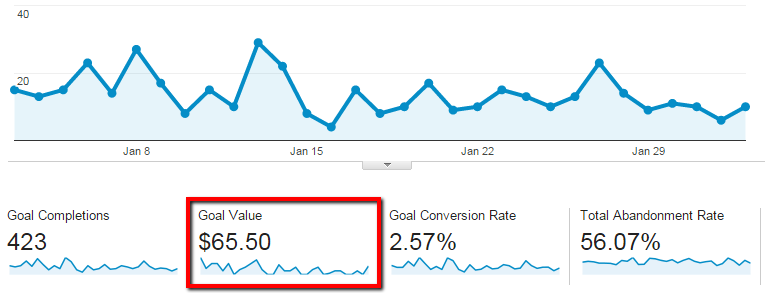Discover the Limitations of Google Analytics Goals: Introducing the Data Types That Remain Untrackable
As organizations progressively rely upon data-driven decision-making, comprehending the limitations of devices like Google Analytics becomes extremely important. While Google Analytics Goals offer important understandings right into user interactions, there exist data kinds that thwart monitoring, presenting obstacles to a thorough understanding of customer habits. These untrackable information kinds question concerning the accuracy and efficiency of the analytics information that companies heavily rely upon for their digital methods. Interested to uncover the hidden blind spots in your information analysis procedure?
Insufficient Customer Trip Tracking
Incomplete customer trip tracking within Google Analytics can prevent the capability to properly examine customer behavior. When the individual trip is not totally tracked, there are voids in the information that protect against a thorough understanding of exactly how individuals engage with an internet site. This lack of understanding can bring about missed possibilities for optimization and enhancements to the customer experience.
One usual concern with incomplete individual journey monitoring is the failure to see the full course that customers take previously completing an objective or leaving the site. Without this details, it is challenging to identify where users might be coming across barriers or rubbing points that stop them from transforming. In addition, insufficient monitoring can obscure the effect of particular marketing efforts or web site adjustments on customer behavior.
To resolve this constraint, it is critical to establish correct tracking mechanisms within Google Analytics to record the whole individual trip. This might involve setting up occasion tracking, goal funnels, or using devices like Google Tag Manager to make certain that no important interactions go unrecorded. By getting a detailed sight of the individual trip, web site owners can make more informed decisions to improve user involvement and drive conversions.
Acknowledgment Difficulties
Navigating via attribution challenges in Google Analytics requires a comprehensive understanding of just how various touchpoints add to the general conversion process. Acknowledgment difficulties occur from the intricacy of modern consumer journeys, where customers connect with several channels prior to converting. Google Analytics supplies different acknowledgment designs like first touch, last touch, and straight, each supplying a various point of view on exactly how credit rating is appointed to touchpoints along the conversion course. Nonetheless, these versions may not constantly accurately show truth influence of each touchpoint on the conversion.
One usual attribution difficulty is the difficulty in connecting conversions to the right resource, particularly in instances where individuals engage with numerous networks prior to converting. This can lead to errors in identifying which advertising and marketing initiatives are driving one of the most conversions. Additionally, cross-device monitoring poses another attribution challenge, as users frequently switch over in between devices during their journey, making it testing to track their communications perfectly. Online marketers should carefully analyze and examine attribution data to make enlightened choices and optimize their advertising and marketing methods properly.
Offline Conversions
Provided the obstacles associated with associating conversions accurately in online networks, the dimension of offline conversions presents a substantial opportunity for marketers seeking a much more thorough understanding of their customers' trip. Offline conversions describe actions that consumers take in the real world, such as making acquisitions in brick-and-mortar shops or over the phone, participating in occasions, or engaging with published materials - what data is google analytics goals unable to track. These conversions are essential for services that run both online and offline, as they give beneficial understandings right into the efficiency of advertising campaigns across different touchpoints
Tracking offline conversions typically postured a considerable obstacle for marketers, as it was testing to attach these activities back to particular on-line communications precisely. Nonetheless, with innovations in technology, such as the combination of CRM systems, special identifiers, and voucher codes, companies can currently bridge the space in between online and offline data to get an extra holistic view of client habits. By efficiently measuring offline conversions, marketers can maximize their methods, designate resources extra successfully, and ultimately webpage improve the general consumer experience.
Cross-Device Monitoring
Cross-device tracking plays an essential function in comprehending the interconnected nature of customers' electronic communications throughout several devices. In today's omnichannel world, where users perfectly switch in between tablet computers, desktops, and smartphones, tracking their habits throughout these devices is crucial for marketing experts to obtain a thorough sight of their client journey.

In addition, privacy problems and guidelines such as GDPR and CCPA have better difficult cross-device tracking. With customers demanding more control over their information and boosted constraints on monitoring innovations, online marketers need to find privacy-compliant and cutting-edge ways to link customer communications across tools.
Dynamic Content Engagement
Recognizing user involvement with dynamic material is critical in optimizing electronic marketing strategies for boosted audience interaction. Dynamic content describes website aspects that alter based upon user behavior, choices, or various other aspects, offering a personalized experience. However, tracking customer interactions with vibrant content presents obstacles for standard analytics tools like Google check that Analytics.
While Google Analytics can track basic communications like clicks and web page views, it might struggle to capture even more nuanced engagements within vibrant material. what data is google analytics goals unable to track. Metrics such as time spent on particular dynamic elements, float activities, or communications within pop-ups are usually not conveniently quantifiable using basic tracking techniques. This limitation hinders online marketers' capacity to totally grasp exactly how individuals are engaging with vibrant material and tailor their methods accordingly

Verdict
To conclude, Google Analytics objectives have limitations in tracking insufficient customer trips, connecting conversions accurately, catching offline conversions, tracking cross-device interactions, and determining dynamic material involvement. These restrictions highlight the significance of checking out additional monitoring approaches and tools to gain a more thorough understanding of customer behavior and conversions beyond what Google Analytics can provide.
While Google Analytics Goals offer important insights right into individual communications, there exist data kinds that avoid tracking, positioning obstacles to an extensive understanding of user actions.Insufficient individual journey tracking within Google Analytics can impede the capability to properly evaluate individual actions. When the user journey is not completely tracked, there are spaces in the data that protect against a thorough understanding of just how individuals interact with an internet site.One common problem with insufficient customer trip monitoring is the lack of ability to see the full course that users take in the past finishing a goal or leaving the site. By getting a comprehensive view of the individual journey, website proprietors can make more educated decisions to boost user interaction and drive conversions.